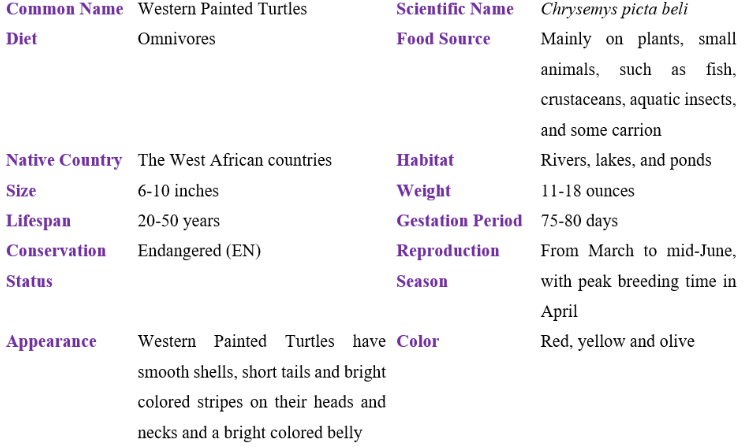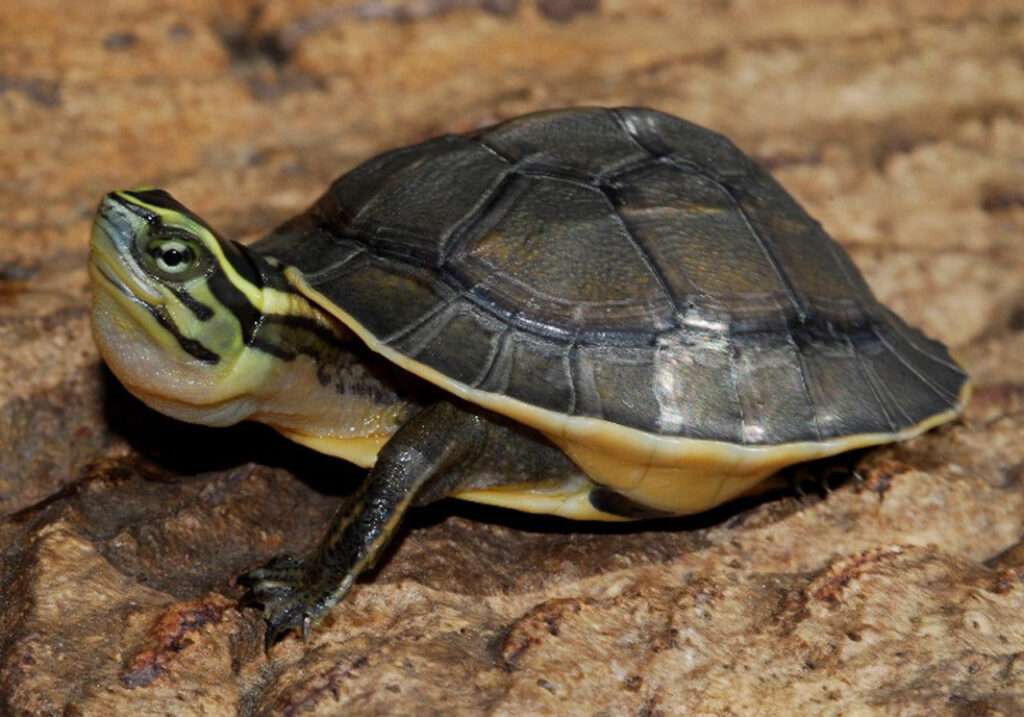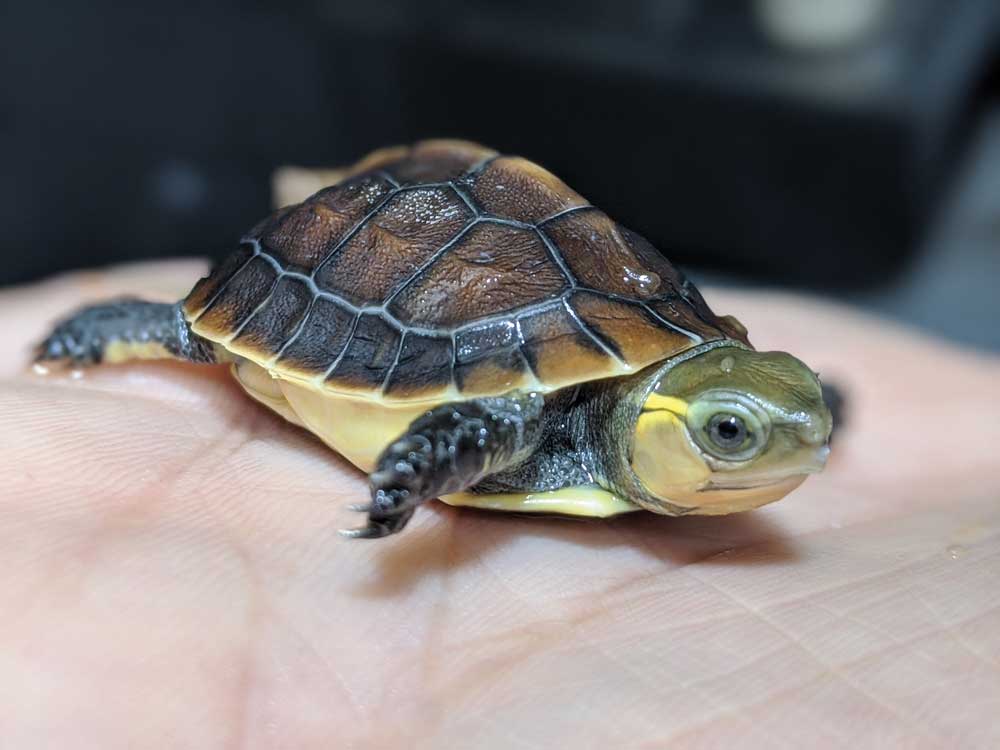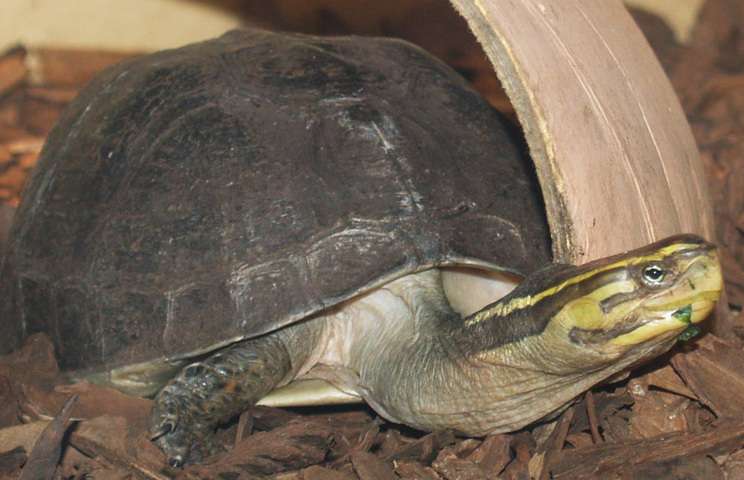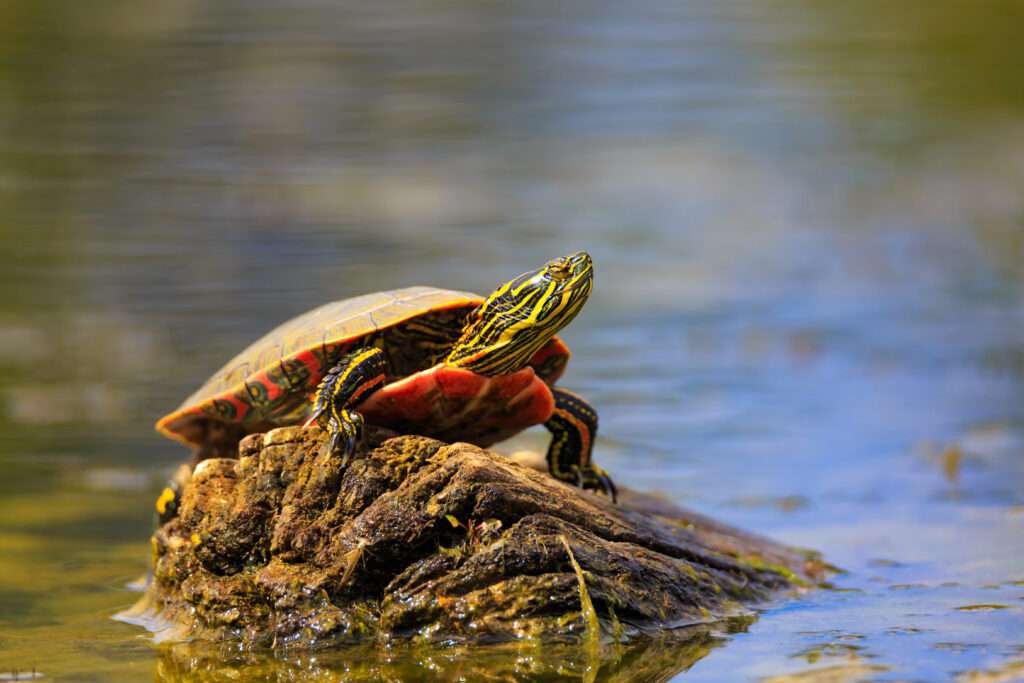
Western As long as you buy a big enough tank, painted turtles are fairly straightforward to care for. Even though they dislike being handled, it’s entertaining to watch them swim around their tank. One of these magnificent turtles is cared for by even newbies.
In the reptile hobby, painted turtles are among the most well-known and widely available aquatic turtles. Western Although the Painted turtle (Chrysemys picta belli) is the largest subspecies, keeping one as a pet is not difficult.
Habitat
The slow-moving waterways found in lakes, marshes, ponds, and streams are where you can find Western Painted turtles. These habitats require a lot of aquatic vegetation, clean, shallow water, and soft bottoms. Western Painted turtles, in contrast to other painted turtles, can survive at elevations up to 5900 feet (1800 m).
Care as a Pet
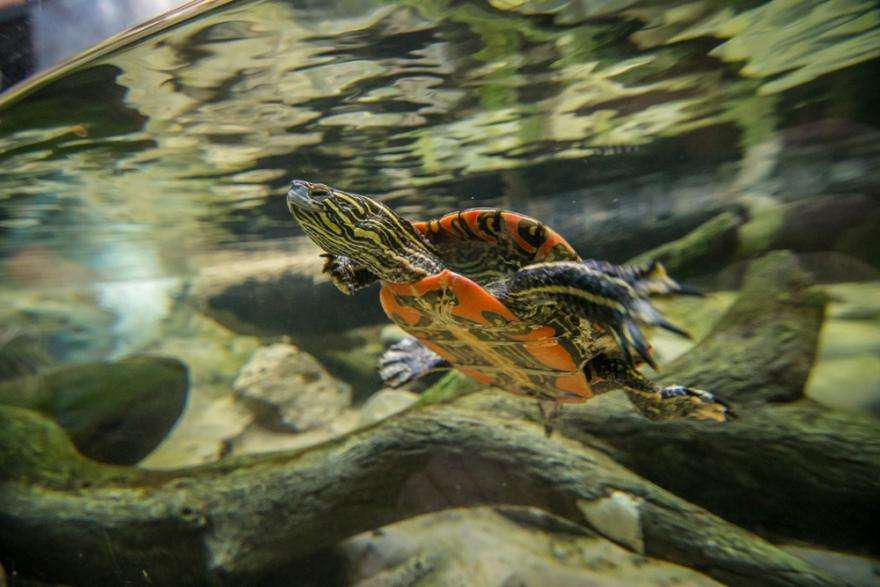
Feed
Western Throughout the year, painted turtles eat a variety of omnivorous foods. During the spring and early summer, insects like crickets make up about 60% of their food. The Western Painted turtle transitions to a diet that is slightly more herbivorous (55%), eating plants and seeds, toward the end of the summer.
Breed
Western There are two times of year that painted turtles can breed: in the spring and in the fall. For mating to start, the water’s temperature must be between 50 and 77 ° F (10 and 25 °C). Males will attempt to massage ladies’ faces and necks during courtship. The turtles swim to the bottom to mate if they pair up. Then, between May and July, the females lay their eggs. A clutch of up to 12 eggs is laid after a burrow is dug on sandy soil. Females are capable of having two to five clutches annually.
Enclosure
It is not surprising that Western Painted turtles require a sizable cage given that they are the largest subspecies of Painted turtles. For an adult male and a large adult female, a fish tank must have a minimum enclosure of 75 and 125 gallons, respectively.
You could also create a unique pond or use anything like a sizable stock tank if you can keep the turtle(s) safe outside. You will need to make additional space that is roughly equal to half of the tank’s gallon capacity for each turtle you add.
Heat
You must monitor the temperature of the water, air, and basking area when taking care of Western Painted turtles. Use thermometers to monitor them. The most important thing to keep stable is the water’s temperature, which must be kept between 20°C and 24°C (70°F and 75°F). You can utilize a submersible water heater if your climate doesn’t permit this naturally.
Western 80 to 85 °F (26 to 30 °C) is the ideal ambient temperature for painted turtles. The temperature of the basking area must be kept between 85 and 92 degrees Fahrenheit (30 and 33 degrees Celsius).
Feed
Western All year long, painted turtles eat a variety of different foods. They will require a diet that is higher in protein in the spring and early summer. Crickets, earthworms, mealworms, and commercial turtle pellets are all suitable options.
Feed them extra plant food in the late summer, like veggies and duckweed. Feed your turtle every other day, and enhance the food’s nutrition once or twice a week with calcium or Vitamin D. More protein-rich diets should be given daily to younger turtles (under six months old). The following is a list of popular foods that Western Painted turtles love.
Table
